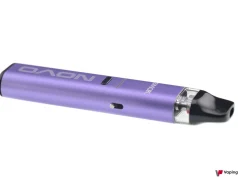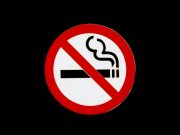Despite this ineffective approach, Dr Betty would like New Zealand to take a similar approach as Australia. “A lot of the vapes are high in nicotine, which is very addictive. We’re starting to see the emergence of young people who are vaping who are finding it very, very difficult to come off the thing itself.”
Betty fails to acknowledge the scientific data indicating that swapping from smoking to vaping can improve respiratory conditions such as Asthma, and actually says that vaping can worsen these conditions. “Young women who are on the oral contraceptive we know have a slightly higher risk of deep vein thrombosis or blood clots. What has started to emerge is that vaping could increase that risk by three times,” he added, once again ignoring the relative safety of the products for smokers.
In response to these claims, Executive Coordinator of CAPHRA (Coalition of Asia Pacific Tobacco Harm Reduction Advocates), Nancy Loucas, highlighted how misguided the RNZCGP’s stance is. “The Royal New Zealand College of General Practitioners (RNZCGP) needs to get with the programme. It’s called Smokefree Aotearoa 2025,” said Loucas.
“If we medicalise vaping, like Australia has, 5,000 Kiwis would continue to die of smoking-related illnesses and we’d fail to reach Smokefree 2025. New Zealand’s Parliament and Ministry of Health have literally just gone through years of investigating, legislating and regulating vaping. Restricted retail access is where we landed,” she added.
Loucas commended New Zealand’s Health Minister Dr Ayesha Verrall for not succumbing to such pressures from Lobby Groups and relitigate the 2020 vaping legislation. “New Zealanders are on totally onboard with their nation’s 12-year-long smokefree goal. The Ministry of Health openly views vaping as key to achieving that, as does the Minister. It’s time the RNZCGP got up with the programme,” she added.
Why Australia is a bad example to follow
In Australia, nicotine vapes have been classified as “prescription medicines” since October 2021. Yet, even the Head of Australia’s Therapeutic Goods Administration Associate Professor John Skerrit, has recently contradicted himself when he admitted that “the current regime doesn’t seem effective at all” yet refused to take responsibility for it: “we should be proud of what we have done on vaping”.
Questioned at Senate Estimates last December in Canberra, Skerrit made the following points:
- There has been a dramatic increase in youth vaping
- Huge numbers of low-quality products are entering the country and are being sold on the black market and we can’t stop them
- Only 1,353 doctors have applied to be authorised prescribers out of 130,000 registered doctors (1%)
- Less than 10% of adult vapers have a prescription for nicotine
In response to this data Senator Ross Cadell highlighted that the current vape regulations are a failure and while Skerritt acknowledged that “the current regime doesn’t seem effective at all” he went on to insist that they “should be proud of what we have done on vaping”.





![Nicotine is Harmful for the Developing Brain – Or is it? [su_divider top="no" size="1" margin="10"]](https://www.vapingpost.com/wp-content/uploads/2024/06/nicotine-headache-238x178.webp)







